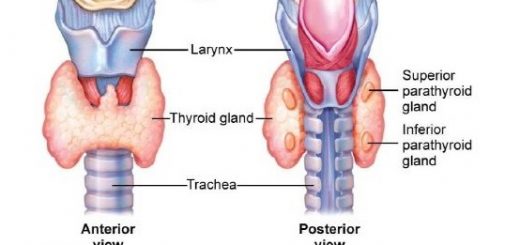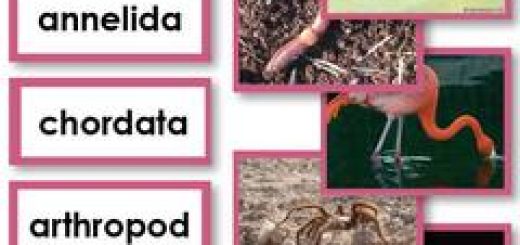Alternation of generations, Life cycle of malaria parasite and Life cycle of a fern plant
Alternation of generations is a phenomenon of the succession of two or more generations in the life cycle of an organism, where there is a generation that reproduces sexually with one generation or more that reproduce asexually, There are some plant and animal species that can breed both asexually and sexually during their life cycle to gain the adventure of both methods together.
Alternation of generations
Where Sexual reproduction achieves the genetic diversity that enables the individuals to disperse widely and conform with the environmental fluctuations, Asexual reproduction achieves rapid production and a large number of offsprings, This may be associated with the variation of chromosomes number in the cells of these alternated generations.
Life cycle of Plasmodium (malaria parasite)
Plasmodium is considered from the sporozoan parasites that parasites on both the human and female Anopheles mosquito, In the life cycle of Plasmodium, there is a generation that reproduces sexually by gametes (in mosquito) and alternates with generations that reproduce asexually by sporogony (in mosquito) and by schizogony (in human).
Life cycle in human body
- Its life cycle starts, when the infected female Anopheles mosquito bites the human skin and pours in his blood a minute spindle-shaped called the sporozoites (n).
- The sporozoites move with the blood towards the liver, where they spend an incubation period during which they make two cycles of asexual reproduction, where their nuclei divide by schizogony to produce several merozoites (n).
- The merozoites migrate to the blood, infecting the red blood cells, where they pass several asexual cycles to produce huge numbers of merozoites.
- A huge number of merozoites is released every two days after the destruction of the infected red blood cells, releasing toxic substances, Meanwhile, the symptoms of malaria fever appear in the patient such as an increase in body temperature, chill & heavy sweating.
- Some merozoites transform into gametocytes (n) that are transmitted with the blood of the patient to the mosquito when it bites an infected human.
The male Anopheles does not infect the human with Plasmodium, because it does not feed on blood, therefore it is not infected by this parasite, where it has sucking mouthparts that help it to feed on the flower nectar only.
The life cycle in female mosquito’s body
- The gametes are released from the red blood cells and fused to form the zygote (2n) in the mosquito stomach.
- The zygote transforms into an ookinete (2n) which penetrates the stomach wall of mosquito.
- The ookinete divides meiotically to give oocyst (n) whose nucleus divides by mitosis and this is known as sporogony which is considered asexual reproduction.
- Numerous sporozoites that result from sporogony are liberated and moved towards the mosquito’s salivary gland to be ready for infecting another human.
The life cycle of a fern plant (Polypodium)
From the common examples of ferns, Polypodium is known in plant nurseries as an ornamental plant, Adiantum grows on the edges of the walls and shaded streams.
The life cycle of Polypodium is considered as a typical example for the phenomenon of alternation of generations, where there is a sporophyte phase (2n) that reproduces asexually by spores and alternates with a gametophyte phase (n) that reproduces sexually by gametes.
Sporophyte phase
- The life cycle of Polypodium plant starts with the sporophyte phase which carries sori on the lower surface of its leaves, having sporangia which contain numerous spore cells (2n).
- The spore cells (2n) divide by meiosis, giving the spores (n).
- On the spores maturation, they are released from the sporangia and carried by the wind to far distances.
Gametophyte phase
When the spore falls on wet soil, it germinates forming several cells that develop and differentiate into a flat body which grows in the form of a heart shape above the wet soil and it is known as the gametophyte whose lower surface is characterized by the presence of the following:
Rhizoids grow on the posterior region of the lower surface of the gametophyte as processes and penetrate the soil to absorb water and salts, Genital organs grow on the anterior region of the lower surface of the gametophyte and they are two types which are:
- Antheridia (male organs) produce the male gametes (ciliated sperms).
- Archegonia (female organs) produce the female gametes (eggs).
On the maturation of antheridia, the male gametes (ciliated sperms) liberate from them and swim over the soil water, till they reach the mature archegonia to fertilize its egg, forming the zygote (2n), The zygote divides and differentiates into a new sporophyte that grows over the gametophyte.
The sporophyte depends for a short time on the gametophyte, till it develops its own roots, stem & leaves, The gametophyte degenerates, while the sporophyte grows to repeat the life cycle.
Sporophyte phase in Polypodium
Sporophyte consists of transverse roots, stem, rhizome & leaves that carry sori on their lower surfaces which contain sporangia that have numerous spore cells (2n).
Diploid (2n), where it results from sexual reproduction by fertilizing the egg (n) by the ciliated sperm (n), It reproduces asexually by the spores that are formed by the meiotic division of spore cells (2n) in the sporangia.
Gametophyte phase in Polypodium
A flat heart-shaped body carries on the posterior region of its lower surface the rhizoids grow that penetrate the soil to absorb water and salts and on the anterior region of the same surface, there are the male genital organs (antheridia) and female genital organs (archegonia).
Haploid (n), which it results from the germination of the spore (n), It reproduces sexually by the male and female gametes that are formed by the mitotic division of the genital organs.
Reproduction, Types of sexual reproduction (Conjugation, Reproduction by sexual gametes)
Reproduction in flowering plants, Structure & functions of the flower











